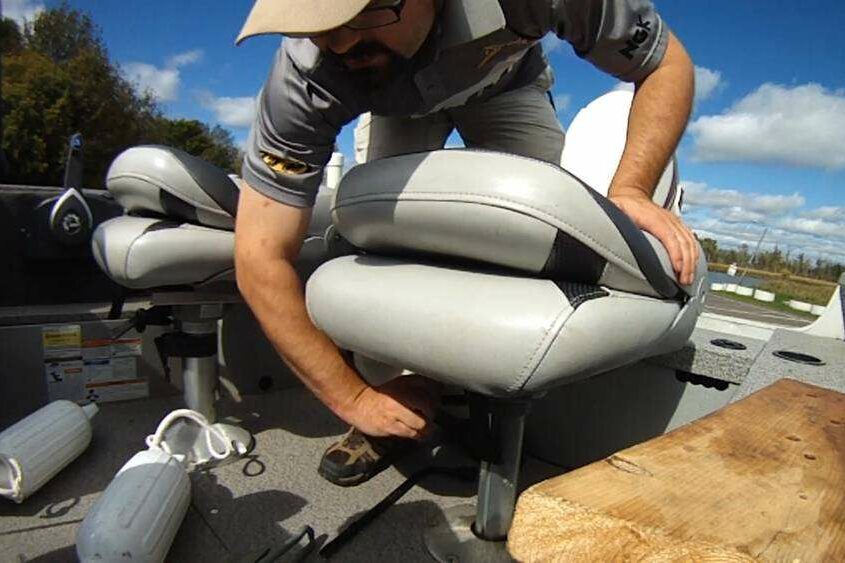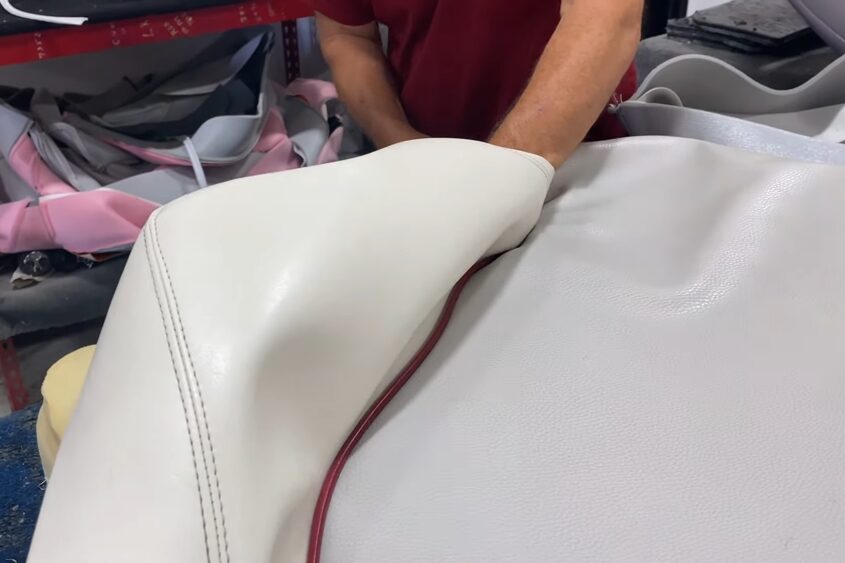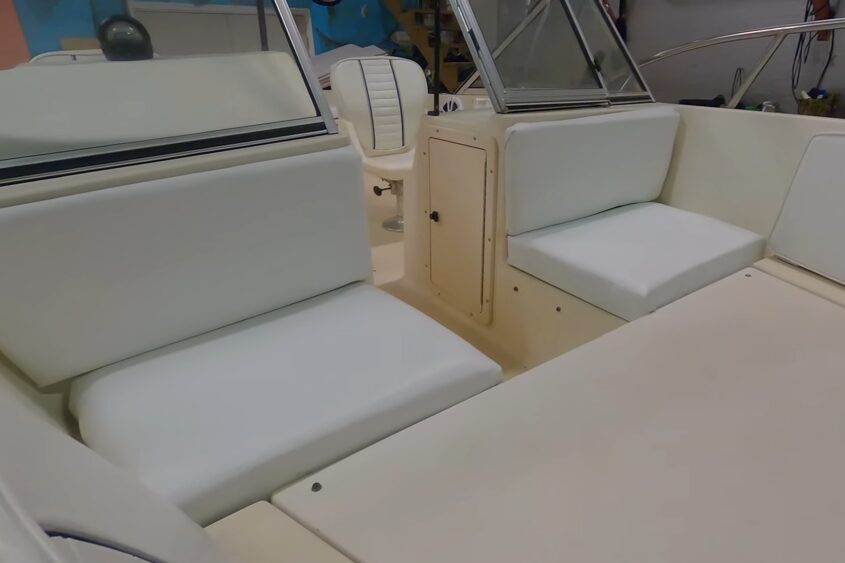Boat seats can undergo wear and tear over time, making them appear worn out and less comfortable. Reupholstering boat seats is a great way to revitalize your boat’s interior and improve its overall aesthetic appeal. However, if you don’t have sewing skills or access to a sewing machine, you might wonder if it’s still possible to accomplish this task. The good news is that you can indeed reupholster boat seats without sewing. In this article, we will guide you through the process of giving your boat seats a fresh new look, all without the need for sewing skills or equipment.
1. Assessing the Condition of Your Boat Seats
Before starting the re-upholstering process, it’s essential to assess the condition of your boat seats. Check for any structural damage or issues that need to be addressed before proceeding with the upholstery. Make sure the seat frames are sturdy and repair or reinforce them if necessary. This step ensures that your seats are in good condition and ready for reupholstering.

2. Choosing the Right Upholstery Fabric
Selecting the appropriate upholstery fabric is vital for a successful reupholstering project. Opt for a marine-grade or outdoor-rated fabric that is water-resistant, UV-resistant, and durable. These fabrics are specifically designed to withstand the harsh marine environment and will maintain their quality and appearance over time. Consider the style and color that best complements the interior of your vessel as well as your personal tastes.

3. Removing the Old Upholstery
Start the re-upholstering process by removing the old upholstery from the boat seats. Use a screwdriver or staple remover to detach any staples or fasteners holding the fabric in place. Take your time and be careful not to damage the seat foam or structure. Dispose of the old upholstery properly.

4. Measuring and Cutting the New Fabric
Measure the dimensions of each seat carefully. Increase each measurement by a few inches to ensure you have enough fabric to cover the seats. Lay out the new upholstery fabric and use a fabric marker or chalk to trace the seat dimensions. Cut the fabric along the marked lines, ensuring clean and straight edges.
5. Applying Adhesive to Secure the New Upholstery
To attach the new upholstery to the boat seats:
- Use a high-quality adhesive specifically designed for fabric bonding.
- Apply the adhesive evenly on the seat surface, ensuring complete coverage.
- Follow the manufacturer’s instructions regarding the drying time and application process.
Choosing an adhesive that is suitable for marine applications and provides a strong and long-lasting bond is essential.
6. Stretching and Smoothing the Fabric
Carefully place the cut fabric onto the seat, aligning it properly. Start from one end and gradually smooth out the fabric, removing any wrinkles or air bubbles as you go. Use your hands or a smooth, flat tool to stretch the fabric gently and ensure a snug fit. Pay attention to corners and curves, making small incisions if necessary to achieve a smooth and seamless appearance.
7. Attaching the New Upholstery to the Seats
Once the fabric is stretched and smoothed, secure it firmly to the seats. Apply pressure to ensure the adhesive bonds effectively with the fabric and seat surface. Use a staple gun or heavy-duty staples to reinforce the attachment further. Place staples along the edges and underneath the seat, ensuring they are evenly spaced for a secure hold.
8. Adding Finishing Touches
After attaching the new upholstery:
- Trim any excess fabric carefully.
- Use sharp scissors or a utility knife for precise cuts.
- Pay attention to details and ensure the edges are neat and tidy. If desired, you can add decorative elements such as piping or buttons to enhance the overall appearance of the boat seats.

What are some tips for reupholstering boat seats?
You should ensure that you have a clean workspace and plenty of room to work on the project. You should also have a good set of tools to cut the new upholstery fabric and get it fitted to the boat seat.
If you’re working with leather, make sure it’s nice and dry before you start working on it. If you don’t have a place to store your leather, you can use a blow dryer to ensure it’s nice and dry.
If you’re using a sewing machine, ensure the needle is sharp for the best results. You should also ensure you have the right thread to match your fabric. Finally, it would help if you used a staple gun to secure the new upholstery fabric onto the boat seat and sew it down with a sewing machine.
If you’re working with vinyl, make sure it’s nice and clean before you start working on it. If you don’t, it could come apart, and you’ll have to start over. You should put a layer of glue on the top and bottom of the vinyl before you begin to work on it. Follow the manufacturer’s directions when working with glue on vinyl boat seats.
You can create patterns for your boat seat covers by tracing around them with chalk. You can also use a Sharpie to create designs. Use a tack hammer and a wood block when working with upholstery fabric on boat seats. You can also use a tack hammer to secure the material onto the boat seat.

FAQs
What are some of the best vinyl boat seats covers?
There are several suitable options for vinyl boat seat covers, but it’s essential to ensure that you’re getting high-quality materials. The best option is to shop and compare prices for the best deal. In addition to the cost of the material, you’ll also need to factor in any labor charges. While it’s possible to do this project yourself, it is much more complex than most people realize.
What should I look for in boat seat replacement?
You should ensure that you’re getting high-quality materials for the best results. It’s also a good idea to ensure that you have enough space to work on the project and plenty of time. You’ll also need to ensure you have the right tools for the job.
What are some of the best materials for boat seat covers?
Some of the most popular materials include vinyl, leather, and microfiber. Vinyl is the least expensive option, but it’s also the most durable of all three options. It doesn’t require much care to keep it looking good for a long time. Leather is a little more expensive but requires less maintenance to keep looking good for a long time. Microfiber looks excellent and feels better than leather, but it’s the most costly option.
What are some of the best tools for reupholstering boat seats?
You’ll need a staple gun, scissors, and a razor blade if you’re working with vinyl. Leather requires a razor blade, scissors, and an Exacto knife to cut the leather into the right shape. Microfiber is easy enough to work with, but you can use a razor blade to cut it if you’re going for a specific shape.
How much does it cost to reupholster boat seats?
It can be costly to reupholster boat seats from a shop. Upholstery shops often charge hundreds of dollars for just a few cushioned seats. However, you can save money by doing it yourself.
Vinyl seat materials can cost $20 a yard, so it’s important to purchase enough material to cover all the seats on your boat. You’ll need to buy marine-grade vinyl and a heavy-duty sewing machine. An electric staple gun costs $30 to $50 if used without sewing, but an industrial sewing machine will set you back as much as $800 depending on the model and quality of the device used.
Should I reupholster boat seats by myself?
It would help if you did it yourself because getting your seats reupholstered from a shop is costly. Also, many people choose to do this by themselves as a fun little project. So, If you are feeling confident and have the time, you can reupholster boat seats on your own. This is a guide; you should be prepared for the job to take a little longer than expected.

